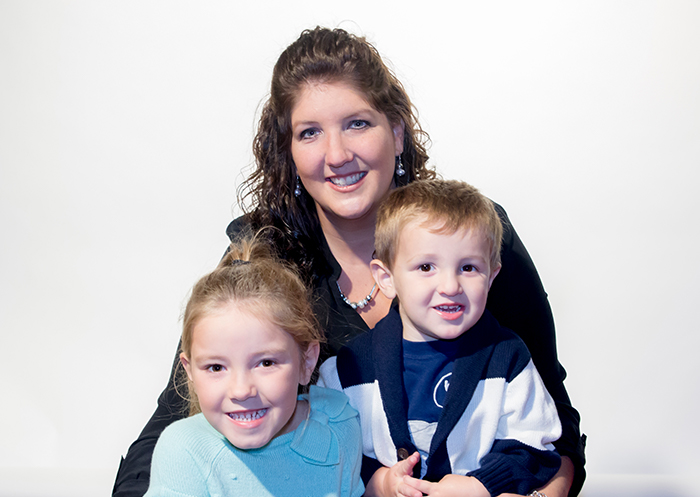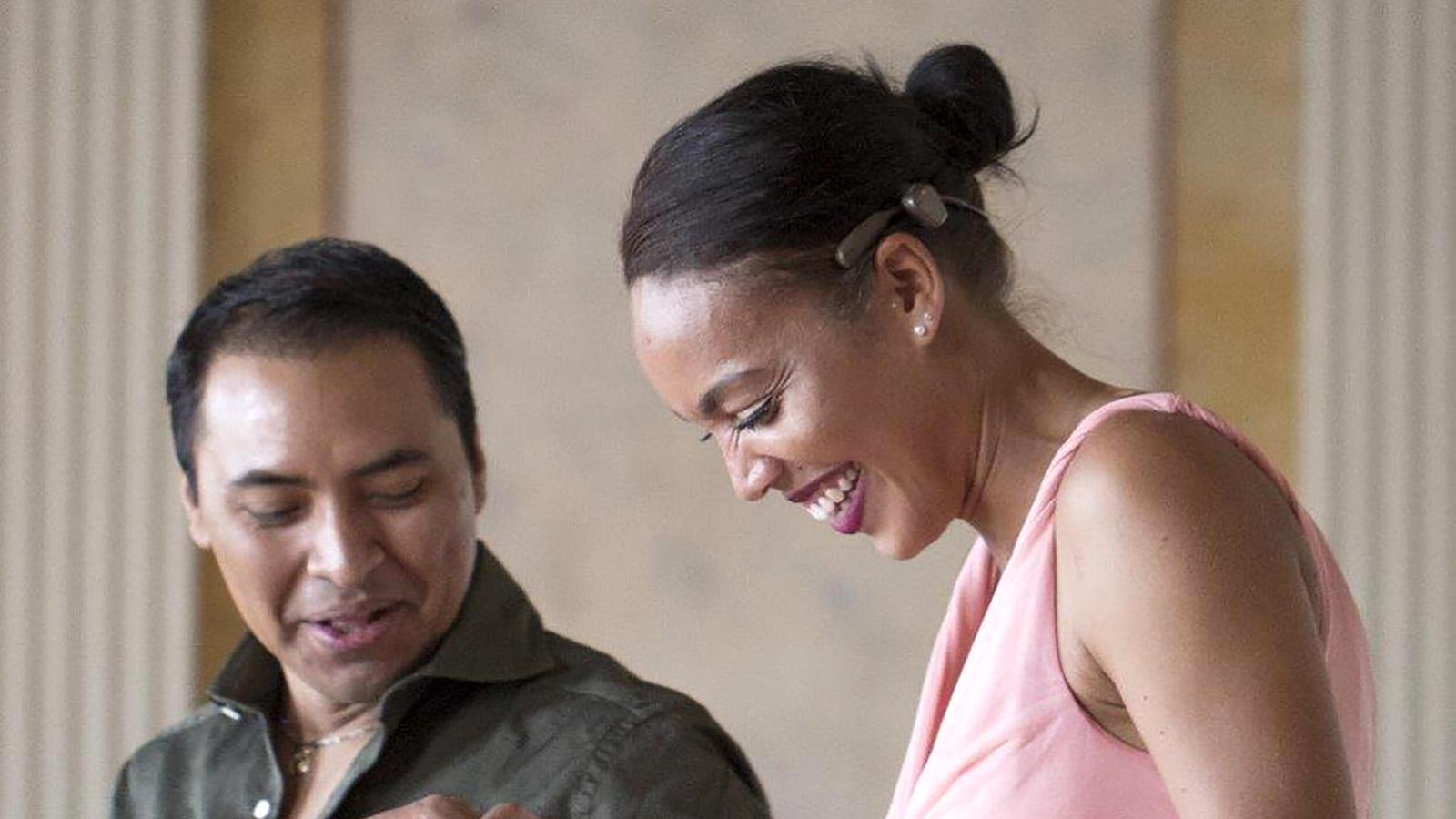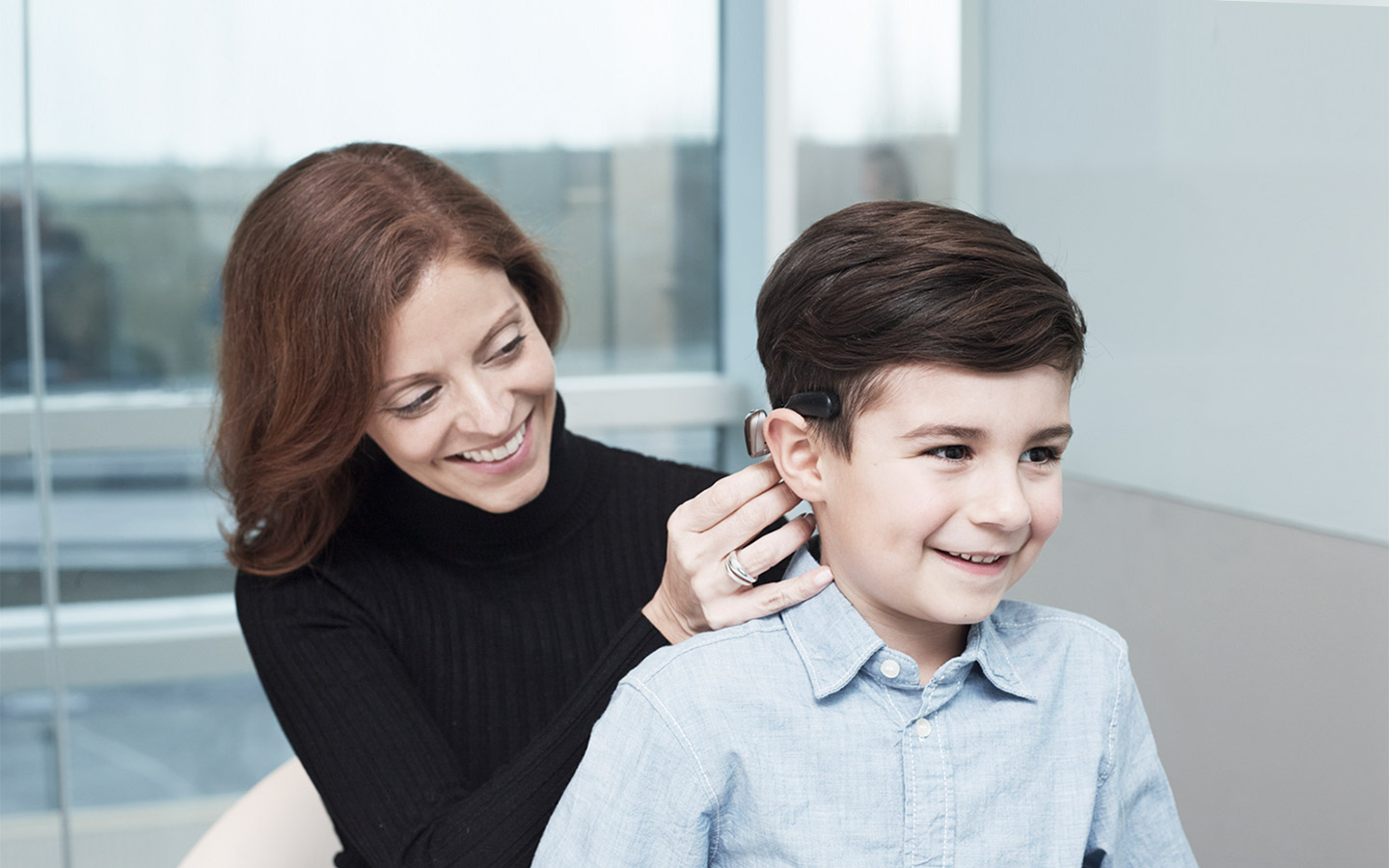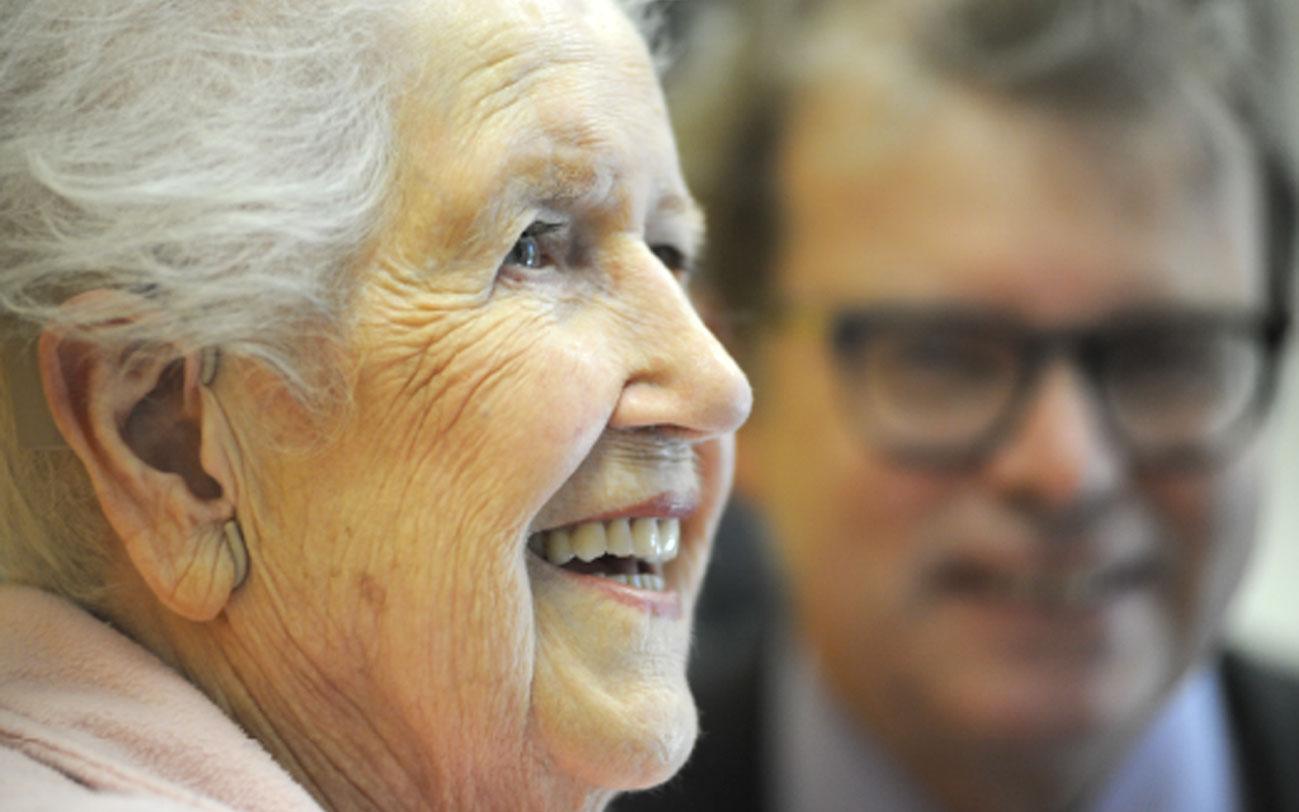Your child's bone conduction implant surgery
Learn about your child’s recovery from bone conduction implant surgery so they can be ready for their sound processor fitting.

What you'll find on this page
- Tips on caring for your child after surgery.
- When your child can return to school and activities.
- How long it may take to recover.
40 years and counting
Deciding on surgery is difficult for parents, especially when children are young. You worry if the procedure will go well. Afterwards, you're concerned your child may be in pain or discomfort.
It's normal to feel anxious, but you're not alone.
Surgeons have performed bone conduction procedures for more than 40 years.
Understanding what to expect after surgery and how to care for your child will help you manage your own feelings as well as theirs.
"After the surgery, we actually went home that day. We were home by noon. And by three o'clock we were having to remind her to stop jumping around, you just had surgery!"
- Melissa, mother of Cochlear™ bone conduction implant recipient
After your child's procedure
After bone conduction implant surgery for the Baha® Attract System, your child’s head will be wrapped in a bandage to protect the incision.
Medical staff will show you how to care for your child’s implant site, along with advice about medication prescriptions and possible activity restrictions.
Your doctor will let you know when to remove your child’s bandage or when to come in for removal of the bandage. This is usually a few days after surgery.
Once you remove the bandage, your child may have some swelling around the incision. The incision will heal and the swelling will disappear.
Routinely, there is no bandage used for bone conduction surgery for the Baha Connect System. To protect the abutment for the Baha Connect System, a small non-stick dressing sometimes used.
It is important to follow all of your doctor’s instructions regarding rest and recovery during this time period.
How to care for your child after bone conduction implant surgery
Your child may go home the same day and resume normal activity as soon as they are discharged.
Recovery can require patience and it's important your child has time to heal, so they're ready to go when it's time to fit their device.
Here are some tips to help your child get better.
- Follow your doctor's instructions and make sure your child takes any medication exactly as directed.
Ensure you are available to take your child home from the hospital. If they are old enough to drive, they won’t be able to after their surgery.
All wounds need to be kept dry until they are fully healed. Taking a bath instead of a shower or wearing a reliable shower cap is recommended to keep water off the area. You should check with your child’s surgeon for the status of the wound before direct water and shampoo is applied.
Your child will have a bandage over their incision. Your doctor will let you know when you can remove the bandage.
Follow-up care is important for your child's treatment. Make sure you attend all appointments and call your doctor if your child is having any problems.
Ensure your child eats a healthy diet and drink lots of water to promote healing.
With switch-on fast approaching, take this opportunity to help your child get ready for the upcoming visits to their hearing health professional and speech therapist, if necessary.
How long does it take to recover?
The surgeon will set a recovery period before it’s time to activate your child’s implant. This is usually four weeks or longer if advised by your surgeon for bone conduction implants.
Every child recovers at a different pace. The care they need will vary too, depending on their independence and lifestyle.
Most children can go back to school or daycare one week after surgery. However, it's usually best they don't take part in contact sports for at least a couple of weeks afterwards.
Talk to your doctor about how much activity is safe for your child.

Disclaimer
Please seek advice from your health professional about treatments for hearing loss. Outcomes may vary, and your health professional will advise you about the factors which could affect your outcome. Always follow the directions for use. Not all products are available in all countries. Please contact your local Cochlear representative for product information.
For a full list of Cochlear’s trademarks, please visit our Terms of Use page.
Views expressed are those of the individual. Consult your health professional to determine if you are a candidate for Cochlear technology.
In Australia, Cochlear™ Nucleus® implant systems are intended for the treatment of moderately severe to profound hearing loss.
In Australia, Baha® bone conduction implant systems are intended for the treatment of moderate to profound hearing loss.
In Australia, the Cochlear™ Osia® System is indicated for patients with conductive, mixed hearing loss and single-sided sensorineural deafness (SSD) aged 10 years and above with up to 55 decibels sensorineural hearing loss. Patients should have sufficient bone quality and quantity to support successful implant placement. Surgery is required to use this product. Any surgical procedure carries risk.
For Cochlear™ Nucleus®, Osia® and Baha® systems: This product is not available for purchase by the general public. For information on funding and reimbursement please contact your health care professional.
Any testimonial featured on this website is intended for an Australian audience only.







